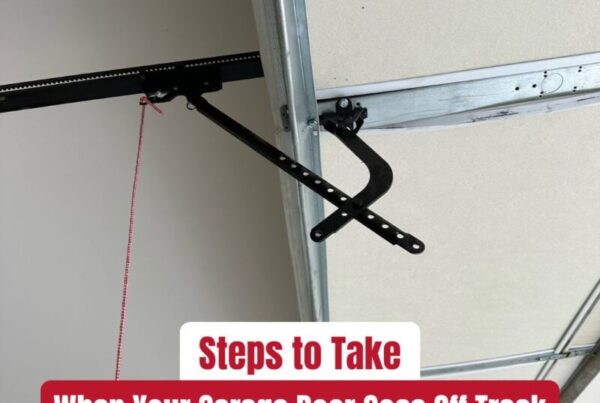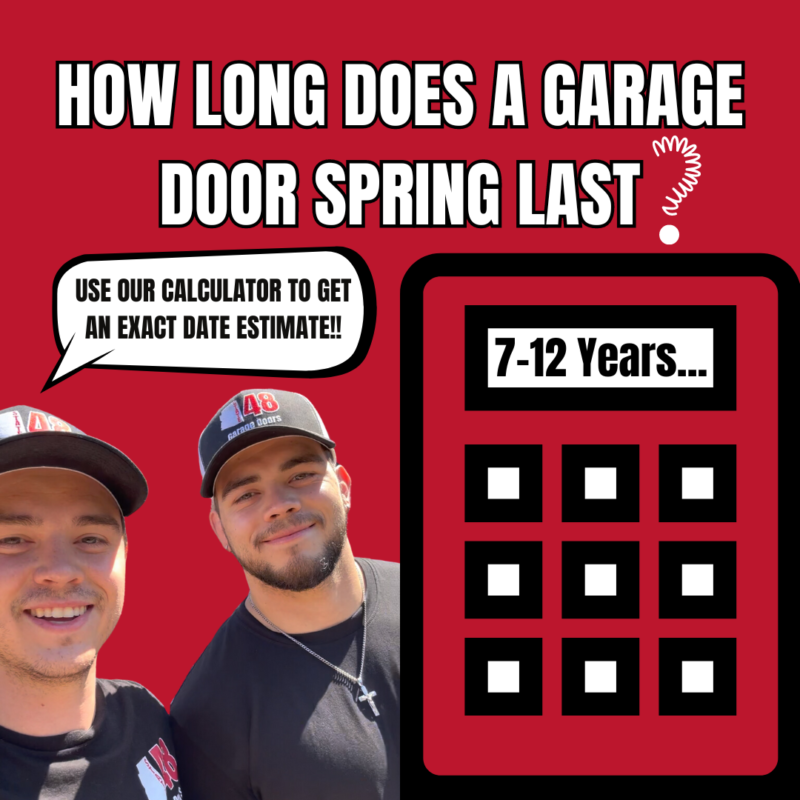
So, how long does a garage door spring last? A standard garage door spring typically lasts for around 7 to 12 years if the door usage averages four times a day. However, this can vary widely, and it’s important not to be caught off guard by a sudden failure, which is why we’ve created our Garage Door Spring Lifespan Calculator. Input your door usage and get an estimate of your garage door spring’s lifespan down to the very day!
Understanding your Garage Door Mechanics
Understanding the mechanics of your garage door is crucial for ensuring its smooth operation and longevity. Let’s explore the key components in detail:
- Spring System: The spring system, comprising of torsion springs or extension springs, acts as the powerhouse behind your garage door. Garage Door torsion springs are mounted on a metal shaft above the door and unwind to lift the door using garage door cables, while extension springs stretch and contract to support the door’s weight.
- Opener System: The garage door opener system consists of the motor, drive mechanism, and remote control. The motor powers the lifting mechanism, which can be a chain, belt, or screw drive. The remote control allows convenient operation of the door from a distance.
- Door Structure: Garage doors come in various materials such as steel, wood, or composite. Insulation options like polystyrene or polyurethane foam enhance energy efficiency. Windows provide natural light, while decorative hardware adds style. Safety features like sensors and emergency release mechanisms ensure protection.
Understanding these subsystems not only enhances your knowledge but also empowers you to troubleshoot minor issues and appreciate the intricate workings of your garage door.
Estimate Your Garage Door Spring’s Lifespan
To gain insight into when your garage door spring might approach the end of its lifespan, explore our innovative Garage Door Spring Lifespan Calculator. This easy-to-use tool provides a precise estimate, empowering you to anticipate and address potential issues proactively. Input the number of times you open your garage door and the estimated installation date to get an exact date of when your garage door springs will break. Don’t get caught off guard – stay prepared with our helpful resource.
Garage Door Spring Lifespan Calculator

Replacement Costs and Tips
The cost of replacing garage door springs can vary, ranging from around $150 to $300 per spring. The price difference primarily depends on the weight and size of a garage door. Think your garage door has two springs and only one is broken? It’s still smart to replace both simultaneously. This ensures equal wear and tear, prolonging the lifespan of both springs.
In addition to the spring replacement costs, it’s essential to consider other potential expenses that might arise during a garage door repair or overhaul. Sometimes, the spring system hardware requires updating, which can add a little bit to the overall costs. If your door opener is aging or was affected during a spring failure, replacing the garage door opener could cost between $600 to $1500, depending if you just want something functional or something top of the line with wifi, security cameras, and other smart control features.
For those unfortunate instances where a door falls and incurs damage, the cost of replacing the entire garage door can range from $1600 to upwards of $2500 for a basic garage door installation, depending on material and design preferences. It’s always wise to factor in these potential expenses, ensuring you’re fully prepared for any scenario. Remember, investing in quality and timely maintenance can significantly reduce the likelihood of facing these extensive repairs, safeguarding your garage door’s longevity.
A Word of Caution
A word to the wise: when it comes to replacing your garage door spring, it’s crucial to understand the potential risks involved. While many DIY projects can be rewarding, this particular task requires specialized knowledge and tools due to the high tension the springs are under. Mishandling them can result in serious, even life-threatening injuries. Therefore, it’s highly advisable to seek the expertise of professionals who are equipped to handle this job safely and effectively, prioritizing your well-being above all else.
Prolonging Your Garage Door Spring’s Life Through Regular Garage Door Maintenance
Regular maintenance is similar to the routine oil changes you schedule for your car – essential for optimal performance and longevity. Just as you wouldn’t skip an oil change, your garage door also needs periodic attention to ensure it continues to function smoothly and safely. One of the simplest yet most effective maintenance practices involves the application of garage door lubricant to all the moving parts of your garage door, at least biannually or as frequently as you get your car’s oil changed. This not only keeps the operation smooth but also significantly reduces the wear and tear on components, including the springs.
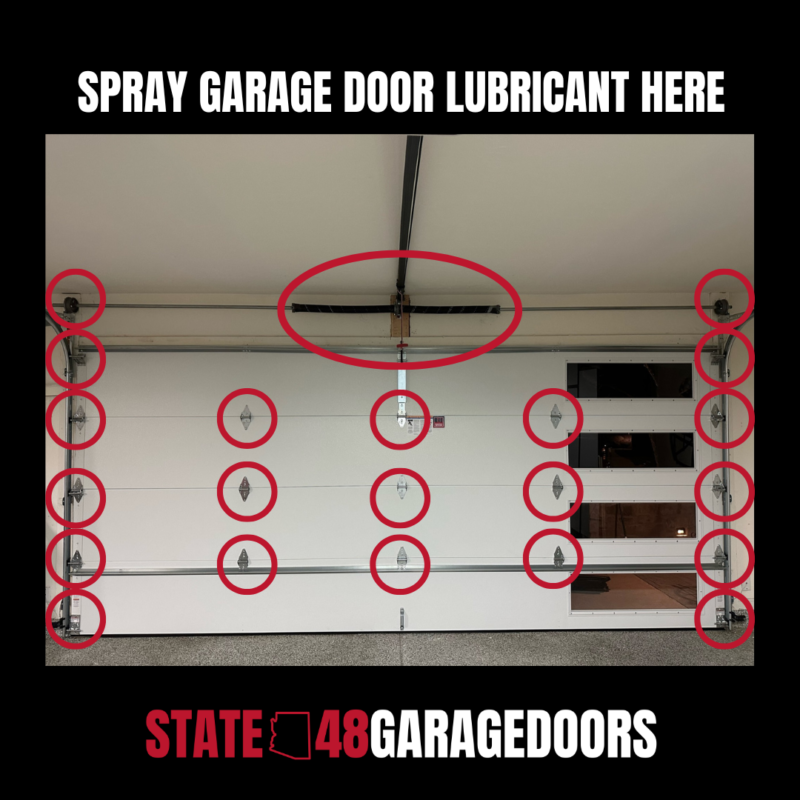
Think of it as nourishing the heart of your garage door system. By dedicating a small amount of time to apply lubricant to the springs, tracks, rollers, and hinges, you’re taking a proactive step towards avoiding premature breakdowns. This simple act of care can extend the lifespan of your garage door springs and save you from unexpected and often costly repairs. Remember, a well-maintained garage door is not just about functionality; it’s about ensuring the safety and security of your home.
Types of Garage Door Springs
On the subject of springs, it’s worth noting that there are various types of spring systems available. Torsion springs are common, but extension springs, and more specialized systems like Wayne Dalton’s TorqueMaster, also exist. Each type of spring system has its own unique setup, with torsion springs being renowned for their high durability and balance.
Understanding the difference between a torsion spring and an extension spring is crucial for any garage door owner. Torsion springs are mounted above the garage door and use torque to lift the door, making them particularly suitable for heavier doors due to their durability and smooth operation.
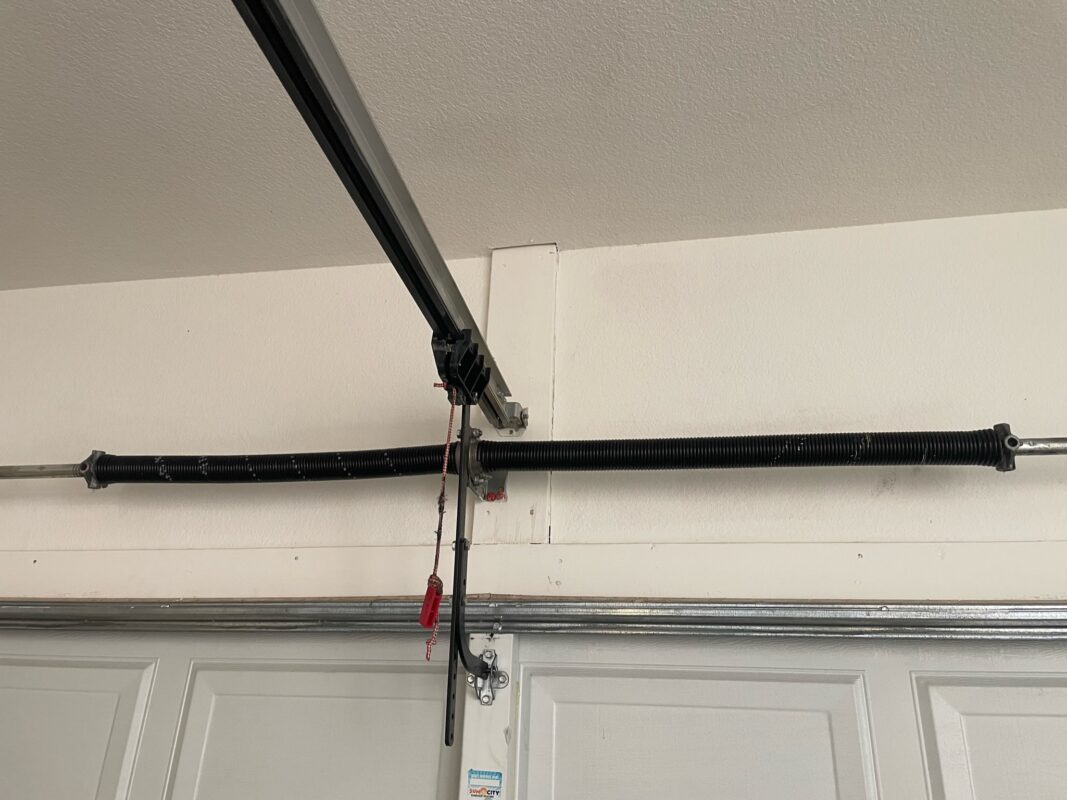
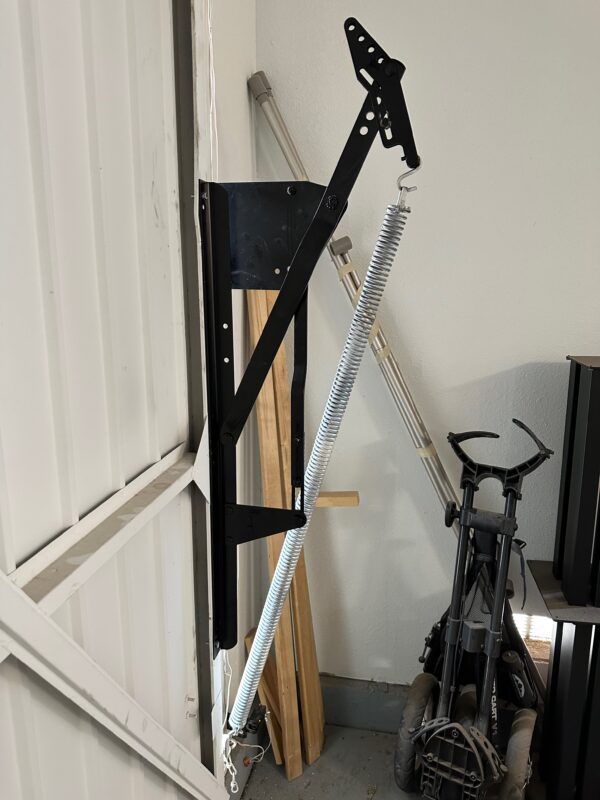
On the other hand, extension springs are installed on either side of the door and expand or contract to open or close the door. While they are typically more affordable than torsion springs, they might not offer the same level of balance or longevity. By familiarizing yourself with these types of springs, you can make more informed decisions about maintenance and replacement, ensuring your garage door operates safely and efficiently for years to come.
How to Identify a Broken Garage Door Spring
Knowing how to identify a broken garage door spring can also be highly helpful. Common signs include a loud noise originating from the garage when the door spring snaps, an evident gap in the torsion spring, difficulty in opening the door which could point to a spring issue, bending in the top area of the door when attempting to open it, a door that closes quicker than usual, and loose cables caused by the missing tension usually provided by the spring.
- Loud Noise: A loud bang from the garage when the spring breaks.
- Gap: A visible gap in the torsion spring.
- Door Won’t Open: If the door only opens a few inches, it’s likely a spring issue.
- Bent Top: The top of your garage door is bent when trying to open.
- Fast Falling Door: The door closes quicker than usual.
- Loose Cables: Cables appear to be loose due to the lack of tension from the broken spring.
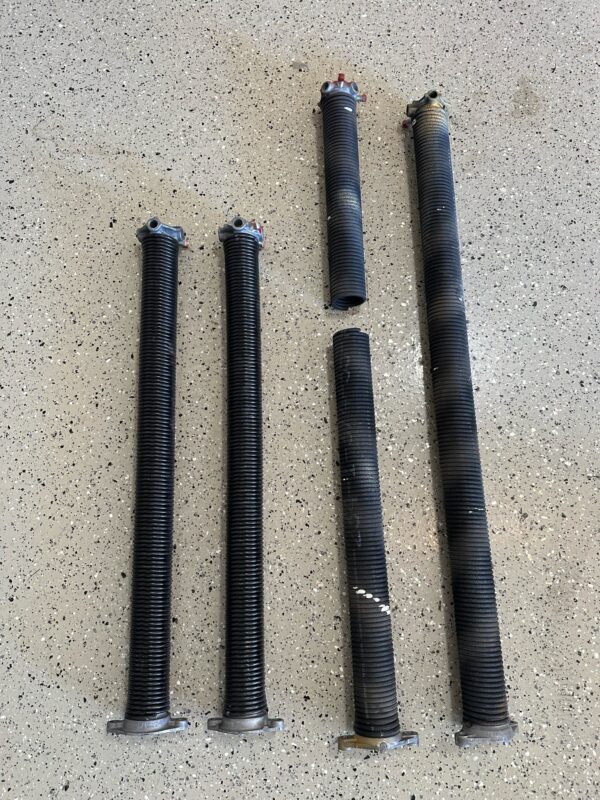
FAQ About Garage Door Springs
Q: Can I replace garage door springs myself?
A: No, due to the potential dangers involved with the high tension in the springs, it’s strongly recommended to use a professional service for garage door spring repair.
Q: How do I know if my garage door spring is broken?
A: Detecting a broken spring involves looking out for signs such as increased noise, a gap in the spring, having issues opening the door, or noticing a bent upper portion of the door.
Q: How often should garage door springs be replaced?
A: Garage door springs generally have a lifespan of 7 to 12 years, but utilizing our Garage Door Spring Lifespan Calculator can provide a more accurate estimate.
Q: Are there different types of garage door springs?
A: Yes, the primary types are torsion springs and extension springs.
Important Safety Tips
In conclusion, garage door springs play a critical role in the operations of your garage door, but handling them can be risky. Using our lifespan calculator, you can stay one step ahead and plan garage door spring replacement before it’s too late. Always remember to replace springs in pairs and leave their replacement to professional garage door repair services. Understanding these basic elements and identifying early signs of wear and tear can save you from the inconvenience of a non-operational garage door.



